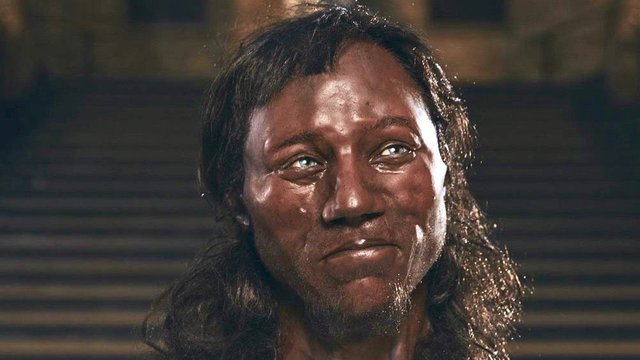The Cheddar Man

When the 10,000-year-old skeleton known as Cheddar Man was first discovered, researchers assumed that the man had had light skin—in keeping with the widely accepted idea that early Britons had fair complexions, just as their descendants do today. But new research shows that the skin pigment of the world’s earliest known Brit was, in fact, dark brown.
The Cheddar Man is Britain’s oldest complete skeleton, found in a cave near the village of Cheddar in southwest England in 1903. Scientists have been studying the skeleton ever since.
Thanks to new technology, researchers at University College London and the Natural History Museum were recently able to genetically analyze the skeleton using DNA extracted from the skull and to make a facial reconstruction. The results, announced on Feb. 7, show that this Brit—contrary to common cultural assumptions about the association between skin pigmentation and geographic origins—had dark brown skin and blue eyes.
To reach this conclusion, researchers extracted DNA from the bone powder in the skeleton’s skull. The genetic material was remarkably well preserved, which the team attributes to the fact that Cheddar Man was in a cave for so long. Then they sequenced the Cheddar Man’s genome and built a face based on the genetic information and other archaeological evidence. The whole story will be presented in an upcoming Channel 4 documentary, First Brit: Secrets of the 10,000 Year Old Man.